| Listing 1 - 10 of 34 | << page >> |
Sort by
|
Book
ISBN: 0865422257 Year: 1993 Publisher: Oxford Blackwell
Abstract | Keywords | Export | Availability | Bookmark
 Loading...
Loading...Choose an application
- Reference Manager
- EndNote
- RefWorks (Direct export to RefWorks)
579.6 --- Applied microbiology --- 579.6 Applied microbiology
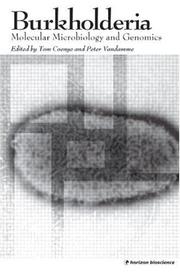
ISBN: 9781904933281 Year: 2007 Publisher: Wymondham Horizon bioscience
Abstract | Keywords | Export | Availability | Bookmark
 Loading...
Loading...Choose an application
- Reference Manager
- EndNote
- RefWorks (Direct export to RefWorks)
579.6 --- 579.6 Applied microbiology --- Applied microbiology
Book
ISBN: 9060876202 Year: 1981 Publisher: Lochem Tijdstroom
Abstract | Keywords | Export | Availability | Bookmark
 Loading...
Loading...Choose an application
- Reference Manager
- EndNote
- RefWorks (Direct export to RefWorks)
Geneeskunde --- Microbiologie --- Médecine --- medische microbiologie --- 579.6 --- Applied microbiology --- 579.6 Applied microbiology
Dissertation
ISBN: 9789491857010 Year: 2014 Publisher: Leuven Katholieke Universiteit Leuven
Abstract | Keywords | Export | Availability | Bookmark
 Loading...
Loading...Choose an application
- Reference Manager
- EndNote
- RefWorks (Direct export to RefWorks)
Since the beginning of the new millennium, research efforts as well as commercial activities concerning mass cultivation and applications of microalgae have gained momentum. The main current and future applications of microalgae are situated in four fields, i.e. biofuel production, wastewater treatment, aquaculture and high-value products. Antioxidants are a commercially important class of high-value products that could be obtained from microalgae. Antioxidants are omnipresent with applications in food and feed industry, cosmetics as well as in the chemical industry. The main objective of this PhD study was therefore to evaluate the potential of microalgae as a source of antioxidants, in view of future applications in food products, and to learn more about the different metabolites that contribute to the antioxidant activity of these unicellular photosynthetic organisms.From our results, it can be concluded that microalgae contain relatively high amounts of antioxidants and are therefore an appealing alternative to higher plants for the production of natural antioxidant preparations. Although microalgae are well known for their high carotenoid content, other components are important as well in relation to the antioxidant activity. In some microalgal extracts, the presence of pigments can interfere with evaluation of antioxidant activity by traditional assays that are based on spectrophotometric measurements. Therefore, the use of voltammetry as an alternative methodology for measuring antioxidant activity was investigated. Antioxidant measurement by square wave voltammetry correlated well with other established antioxidant assays and proved to be a reliable method to assess antioxidant activity in complex matrices. It was further found that antioxidant activity of microalgae highly depends on nutrient availability and growth stage. It was obvious that cultivating under nutrient limitation, especially when nitrogen is limited, leads to biomass that is poor in antioxidant activity. Although phenolic content and carotenoid content were significantly lower in biomass from nutrient deficient cultures, production of the antioxidant vitamins C and E was enhanced under nutrient limited conditions, particularly when phosphorus was the limiting nutrient. The fact that vitamins C and E contents increased upon nutrient stress while total antioxidant activity decreased suggests that the contribution of these vitamins to total antioxidant activity of the biomass is relatively little.Interestingly, microalgae do contain significant amounts of phenolics, comparable to those of carotenoids. A minor part (ppb levels) of the phenolics appear to be flavonoids, a class of polyphenols that until recently was believed to be totally absent in microalgae. In this PhD, the presence of recognized key intermediates of flavonoid biosynthesis (chalcones, dihydrochalcones, and dihydroflavonols) was demonstrated for the first time in microalgae, which points to the existence in microalgae of a plant-like flavonoid biosynthetic pathway and raises the fundamental question on the ancestral physiological function of flavonoids.
Academic collection --- 579.6 --- Applied microbiology --- Theses --- 579.6 Applied microbiology
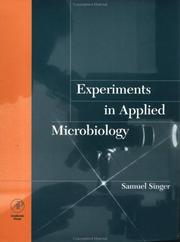
ISBN: 0126459606 Year: 2001 Publisher: San Diego (Calif.): Academic press
Abstract | Keywords | Export | Availability | Bookmark
 Loading...
Loading...Choose an application
- Reference Manager
- EndNote
- RefWorks (Direct export to RefWorks)
579.6 --- Applied microbiology --- Microbiology --- Experiments. --- 579.6 Applied microbiology --- Experiments
Book
ISBN: 0120465027 0120465043 0120465019 0120465035 0120465051 012046506X 0120465078 0120465086 132227956X 1483215881 1322280118 148325948X 1322280126 1483259684 Year: 1970 Publisher: New York, Academic Press,
Abstract | Keywords | Export | Availability | Bookmark
 Loading...
Loading...Choose an application
- Reference Manager
- EndNote
- RefWorks (Direct export to RefWorks)
Microbial toxins. --- 579.6 --- Microbial toxins --- Toxins --- 579.6 Applied microbiology --- Applied microbiology
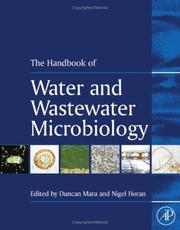
ISBN: 0124701000 9786611008253 1281008257 0080478190 9780124701007 1423755634 9781423755630 9780080478197 9781281008251 661100825X Year: 2003 Publisher: San Diego, Calif. Academic
Abstract | Keywords | Export | Availability | Bookmark
 Loading...
Loading...Choose an application
- Reference Manager
- EndNote
- RefWorks (Direct export to RefWorks)
'Access to safe water is a fundamental human need and therefore a basic human right' Kofi Annan, United Nations Secretary GeneralEdited by two world-renowned scientists in the field, The Handbook of Water and Wastewater Microbiology provides a definitive and comprehensive coverage of water and wastewater microbiology. With contributions from experts from around the world, this book gives a global perspective on the important issues faced in the provision of safe drinking water, the problems of dealing with aquatic pollution and the processes involved in wastewater managem
Drinking water --- Sewage --- 579.6 --- 579.6 Applied microbiology --- Applied microbiology --- Sanitary microbiology --- Microbiology --- Bacteriology --- Microbiology.
Periodical
Abstract | Keywords | Export | Availability | Bookmark
 Loading...
Loading...Choose an application
- Reference Manager
- EndNote
- RefWorks (Direct export to RefWorks)
Microbiologie --- Microbiology --- Microbiology. --- 57 --- 579.6 --- Infectious Disease Medicine --- Biological sciences in general --- Applied microbiology --- Periodicals --- 579.6 Applied microbiology
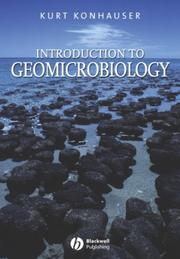
ISBN: 9780632054541 0632054549 Year: 2007 Publisher: Malden, Mass. : Blackwell Pub.,
Abstract | Keywords | Export | Availability | Bookmark
 Loading...
Loading...Choose an application
- Reference Manager
- EndNote
- RefWorks (Direct export to RefWorks)
Geomicrobiology. --- Géomicrobiologie --- Geomicrobiology --- 579.6 --- Geological microbiology --- Microbiological geology --- Geobiology --- Microbiology --- 579.6 Applied microbiology --- Applied microbiology --- Monograph
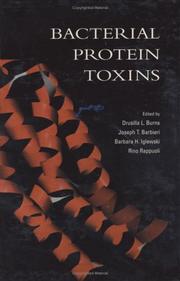
ISBN: 1555812457 Year: 2003 Publisher: Washington : ASM Press,
Abstract | Keywords | Export | Availability | Bookmark
 Loading...
Loading...Choose an application
- Reference Manager
- EndNote
- RefWorks (Direct export to RefWorks)
Bacterial toxins --- 579.6 --- 615 --- 579.6 Applied microbiology --- Applied microbiology --- Bacterial antigens --- Microbial toxins --- Pharmacology. Therapeutics. Toxicology --- Bacterial proteins
| Listing 1 - 10 of 34 | << page >> |
Sort by
|

 Search
Search Feedback
Feedback About UniCat
About UniCat  Help
Help News
News